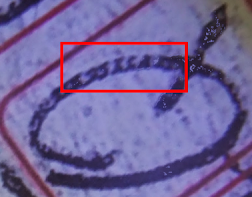HOW TO LOOK AND HOW TO SEE...
This image is that of a WW2 Mosquito, what does that have to do with the Somerton Man? Everything and nothing!
What you are looking at is the result of a Navy analysis of where this aircraft type received most hits from attacking fighters.
The Navy analysts were proud of their work and from this effort, they put forward a recommendation that the locations marked should be where they added armour to protect their aircraft. They were set to reinforce the wing tips, the elevators and the mid-upper body.
ONE SMALL PROBLEM
It all sounded logical, in many ways much of what has been written on the Somerton Man case can also sound logical. People out there faithfully trudge the path of history and the sometimes lurid details of the personal lives of their targeted subjects and in which they seem to take great delight. There are some who race away and get fired up with a theory and jump immediately to a conclusion only to have it all fall flat. That's what happened to this Mosquito aircraft and its studious analysts.
You see, the aircraft that these well-meaning men and women examined, were the ones that returned to base, badly shot up but the point is they got back, they survived.
What they should have been analysing were the wrecks of such aircraft that didn't make it home, the ones that were destroyed by enemy action, not the ones that survived.
Had they taken that approach, they would have added armour to the nose, the cockpit area and immediately behind it, the engines and mid fuselage to tail.
Thankfully a Mr. Abraham Wald, a statistician, saw the real problem and the remedy was applied.
The Mark XV111 was an example of the results of his work, it had 410 kg of armour added within the engine cowlings, under the cockpit floor and around the nose. 3 out of 4 isn't bad.
THE LESSON?
Look outside the dots! Don't pursue the apparent logical answer without addressing the whole issue. A classic example is the code page.
Everyone was talking about the Navy code crackers and others apparently failing to crack the 'code' and thought they would try to do it themselves. The right answer, which I am personally confident that the Navy knew, was to ask the question, if the letters aren't the code, then where is the code? As we all now know, the code was, as Detective Brown put it, 'in really tiny lettering beneath the code.'
Don't rely on mysticism, don't be fooled by your own limitations of thought, accept the fact that there is almost always another answer and one that will challenge your thinking. If you don't have the necessary knowledge to pursue the less obvious, then get someone who does or set about learning how.

























